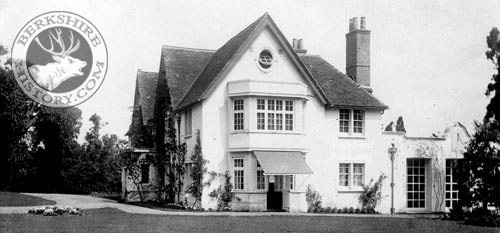 |
 |
|||
|
|
Moulsford Manor, adjoining the parish church, is an important and historic house, commanding a wonderful position on the banks of the River Thames. The property was substantially enlarged during the early 1900s, although the core dates from the Elizabethan period. The principal reception rooms are light and well proportioned, and contain many features characteristic of the Tudor period, such as polished oak floorboards, panelling and decoratively carved fireplaces. The more modern living accommodation is on the northern side of the house. The two upper storeys comprise eleven bedrooms and six bathrooms. In the early 1100s, the Manor of Moulsford was granted to Gerald FitzWalter - the son of the Constable of Windsor Castle - by King Henry I. The family became known as the FitzGeralds and then the Carews, as their principal residence was Carew Castle in Pembrokeshire. They retained Moulsford as their primary English manor and lived there when attending the Royal Court in Oxford or Woodstock, if not London. For 400 years, they resided in a fine medieval manor, perhaps moated, on the site of the present house. The most prominent of the family was probably Nicholas Carew (died 1311) - sometimes called Baron Carew of Moulsford - who loyally served King Edward I in his Scottish Wars. In 1497, however, the Carews sold the manor to Bartholomew Reid, who became Lord Mayor of London five years later. In the latter part of the 17th century the Manor of Moulsford was held by William Gifford and family. Giffordís daughter inherited the property and married William Jones, heir and nephew to Sir William Jones, Attorney General to Charles II. In 1742 the Manor was then sold to Wilmot Baker. On Bakerís death the property appears to have been divided between his two sons. In an account of Moulsford in volume 2 of "Views of Reading Abbey 1810", a gentleman called Robert Baker is described as purchasing The Manor and also, from a separate owner, The Manor House. On the death of Robert Baker in 1812, the property passed to his nephew the Rev. Deacon Morrell, son of James Morrell of Oxford and Robert Bakerís sister Ann, who had previously been married in 1769. It is recorded in a tithe award of 1840 that the Rev. Deacon Morrell owned almost the entire village. The Rev. Deacon Morell was an absentee landlord who resided mostly in Sackville Street,Westminster, his heirs were his brother Baker, and after him his eldest nephew J.W.H. Morrell. In 1857 Hopewell Baker Morrell, son of J.W.H., inherited the estate and in 1903 Hopewell Baker Morrell made over Moulsford Estate to his eldest son Hopewell James Sheldham Morrell. As new Lord of the Manor, Hopewell James did reside in the village. It was not until 1906, after three years of building work, that he moved into the Manor and then promptly died. His widow sold the property in 1907 to Dr. Arthur Mayo Robsen, thus the Estate had new family ownership for the first time in approximately 200 years. Mr. Mayo Robsen greatly enlarged the Manor House and in 1914 sold the property to Mr. C.A. Mills. In 1921 the Estate was sold to W.G.Waldren, very soon after passing to Col. Jones of Ammanford, who bought the Estate in 1922 for speculation. It is clear at this date that the property consisted of the whole village, with the exception of the old Vicarage and Vine Cottage. The Manor remained unoccupied until 1929 when it was let as an hotel to a Mr. A.B. Marks. Col. Jones died intestate in 1934 and a liquidator was appointed to realise what could be obtained for the unsold property. In December 1936 the Manor was sold to Hobbs, a boat builder of Henley, who continued to run it as a hotel. The Manor was taken over by the American Air Force in May 1943 and vacated in 1945 immediately on the defeat of Germany. In 1956, it changed hands and from then was used as a School of Nursing until in 1994 it was purchased by the present owners. Mouslford Manor is a private residence.
|
|||
| © Nash Ford Publishing 2004. All Rights Reserved. | ||||



 Moulsford
Manor
Moulsford
Manor